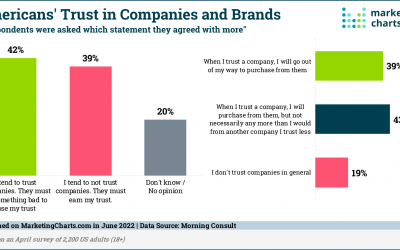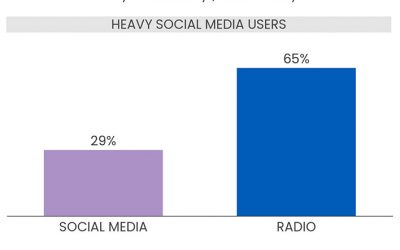Now I know that Trustworthy is one word, however I want to dig a little deeper into this idea and what it means to the success of your business. That is why I hyphenated Trust-Worthy in the title of this article and podcast. If you've been listening to the past few...
ScLoHo’s Collective Wisdom
Is Generational Relatability An Issue?
We're going to talk about generational differences today and how they impact our relationships with others that are older or younger than us. Last month, Mediapost shared a Quick Refresher on Demographics and that was part of the inspiration for this along with some...
The Trust Factor
A couple of Thursday mornings ago, a couple things happened before 8am. An email from Insider Radio that included the headline: Americans May Love Social Media, But Survey Finds It’s Radio That They Trust. Also it was the beginning of day 2 of a weather-induced work...
“The 2022 Sales Lift-Off” January 13th
Are you in the radio business? Join us for this very special national event that I'm honored to be a part of "The 2022 Sales Lift-Off" January 13th ! Join us live on the Clubhouse app next Thursday, January 13, 2022, @ 2 p.m. Eastern/11 a.m. Pacific for a...
Customer Trust Builds Customer Loyalty
In last week’s article and podcast episode which featured material from my SoundADvice newsletter, I mentioned that when all things are equal, the decision we use to determine who we purchase from is based on… perception! And that perception is, who’s better, who’s...
Not All Radio Listeners Are Equal
I've got a few decades of media and marketing experience and I hunger to learn more and more. So this summer I was catching up on my reading and found a story that talks about 6 types of radio listeners and what they want and get from listening to their favorite...
The Effectiveness of Your Advertising
I recently got into a bit of a "discussion" with the owner of an advertising agency regarding a client that we both have. It was interesting because the owner of the advertising agency didn't understand the effectiveness factor of the ad campaign we've been airing on...
8 Principles to Improve Your Life and Business
A couple of weeks ago, I was reading an article on Medium.com titled: 8 Pillars of a Satisfied and Happy Life. Here's a link to it: https://medium.com/mind-cafe/8-pillars-of-a-satisfied-and-happy-life-847d98707e81 It was a beautiful Sunday afternoon as I read it and...
Radio is Back On The Road
It's back. Radio is back on the road. In case you haven't noticed this summer, a lot of us have been doing what we were discouraged from doing last summer. Spring and Summer 2020 was the year of cancelled vacations, limited gatherings and working from home. 2021 has...









